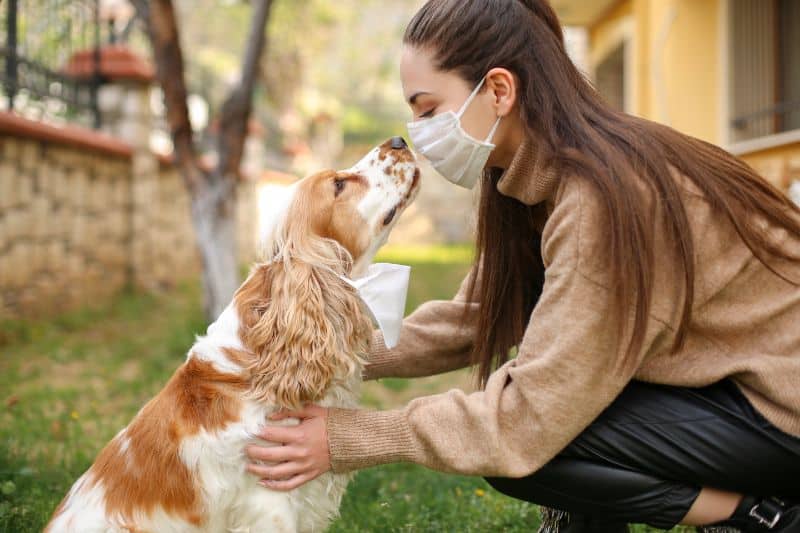A Six-Foot Bubble: Puppy Socialization in the Age of Social Distancing

Whether you adopted a puppy before stay-at-home orders came through, or you made the decision shortly thereafter, we applaud you. Never before have puppy owners been able to spend so much time with their adoptees.
Despite having tons of fun together at home, you know you have a responsibility to introduce your puppy to the outside world. The problem with that is, of course, social distancing.
Your impressionable, curious, and eager puppy has a lot to learn, and with this special edition of puppy socialization, you can help them get there.
Who Would Have Thought?
Many shelters around the country recently celebrated their empty kennels. With so many people staying at home, last minute fosters and adoptions were finalized. The results have been amazing, as pets found themselves in the care of round the clock home owners, and people found instant companionship during an otherwise isolating and lonely time.
However, in the long run, limited exposure to the outside world can have significant drawbacks.
What Puppy Socialization Does
Puppy socialization builds a foundation for a dog to learn that it’s okay to experience new things. Without it, your puppy may enter adulthood potentially unsure of the world around them. Giving them positive, rewarding opportunities is the key to long term confidence and peace of mind.
When to Move Ahead
A puppy’s brain grows about 80% between 4 weeks of age and 4 months. Around their seventh week, puppies enter the secondary socialization period. They are open to new experiences and have little fear. This period lasts until a puppy is about 12 weeks old.
Social Distancing
Your puppy may want to meet everyone they see, but there’s no guarantee that’s safe to do or something remotely welcomed by strangers.
That doesn’t mean you can’t go out in public with your dog (if permitted). As long as you are safely distanced from strangers and other animals you can still provide your puppy with the opportunity to build new skills. Since you’ll want to minimize direct contact with anyone outside your household, this could also introduce basic obedience training.
Also:
- Expose them to sirens, traffic noises, weather, people and places.
- Introduce them to as many textures as you can at home or nearby, such as grass, dirt, mud, stones, gravel, and concrete.
- Show them the hairdryer, lawnmower, vacuum, blender, and other loud appliances.
- Introduce them to the sounds of the TV and radio.
- Try on different hats, coats, and even Halloween costumes.
- Ring your doorbell and open the door.
- Test your smoke detector.
- Open and close your umbrella.
- When feasible, take your puppy for short drives so they can get used to the car and various traffic noises.
Me Time
Even though being together every moment is gratifying, teach your puppy that it’s okay to be alone for a few minutes at a time. By gradually increasing some time apart you are ensuring that your puppy will have the skills to keep separation anxiety at bay.
A New Normal
If/when life returns to “normal” you can increase your dog’s experiences to the outside world. Be sure to enroll in puppy socialization classes, or obedience training.
If you have further questions about your puppy’s wellness or behavior, please let us know.
